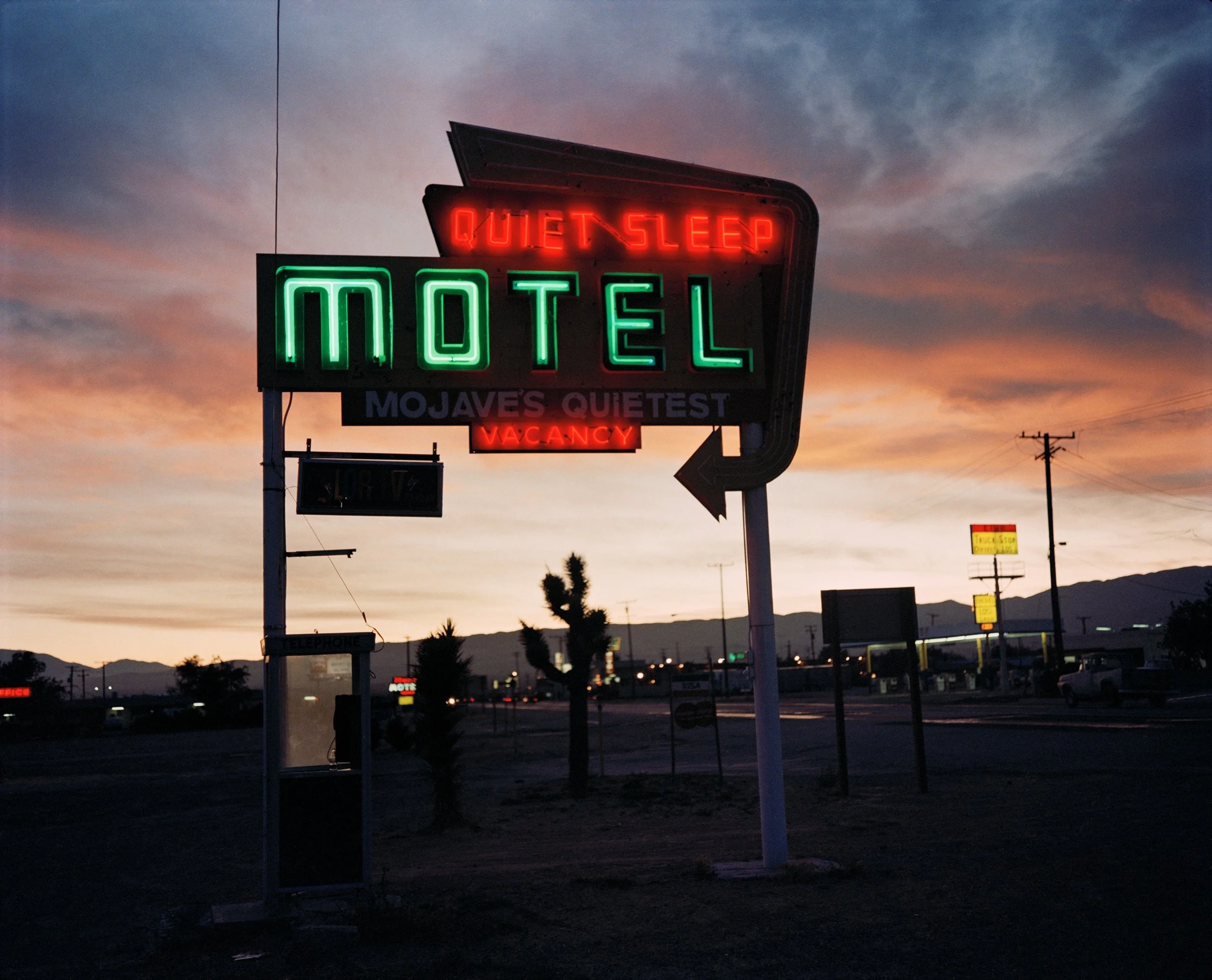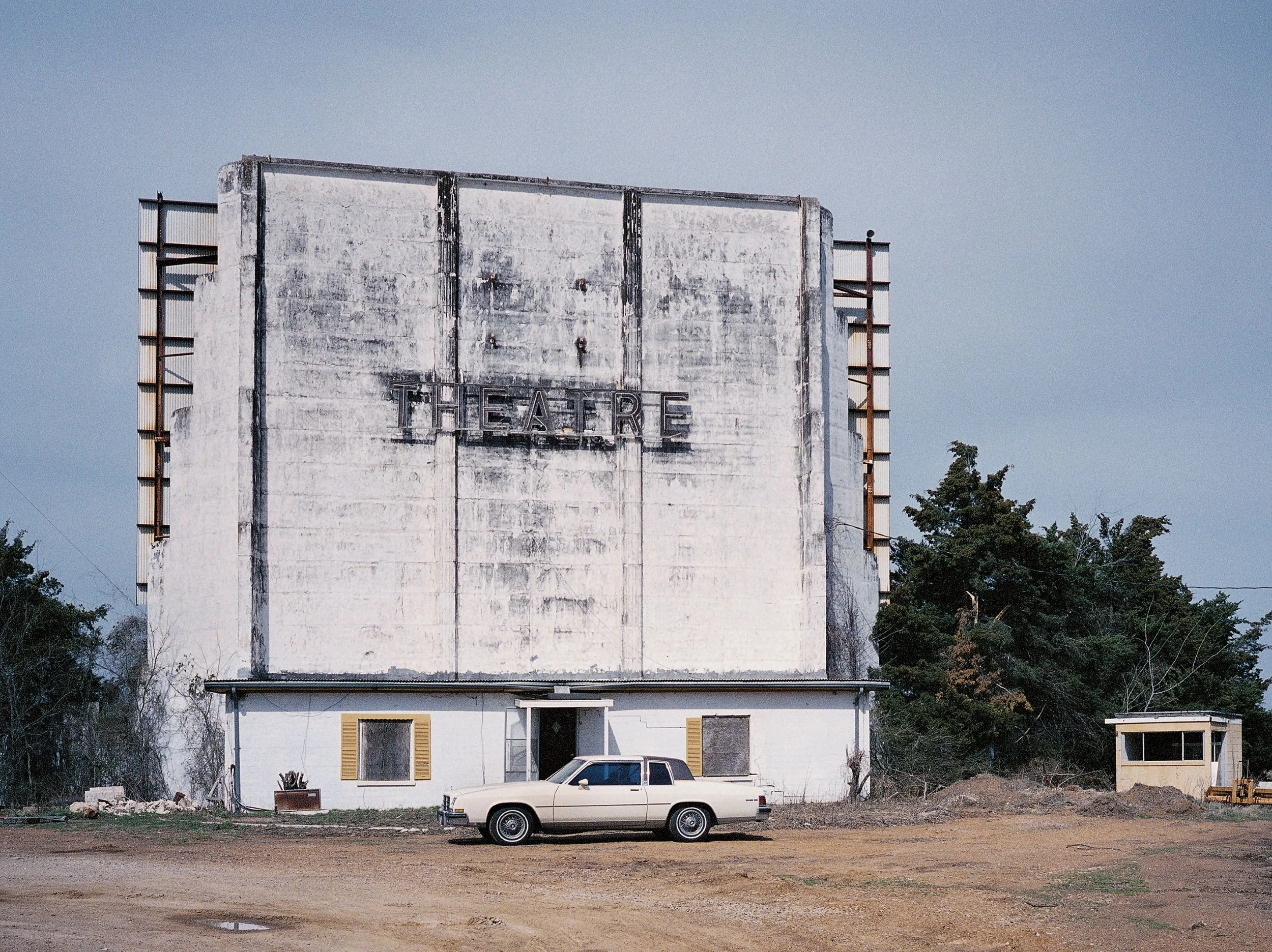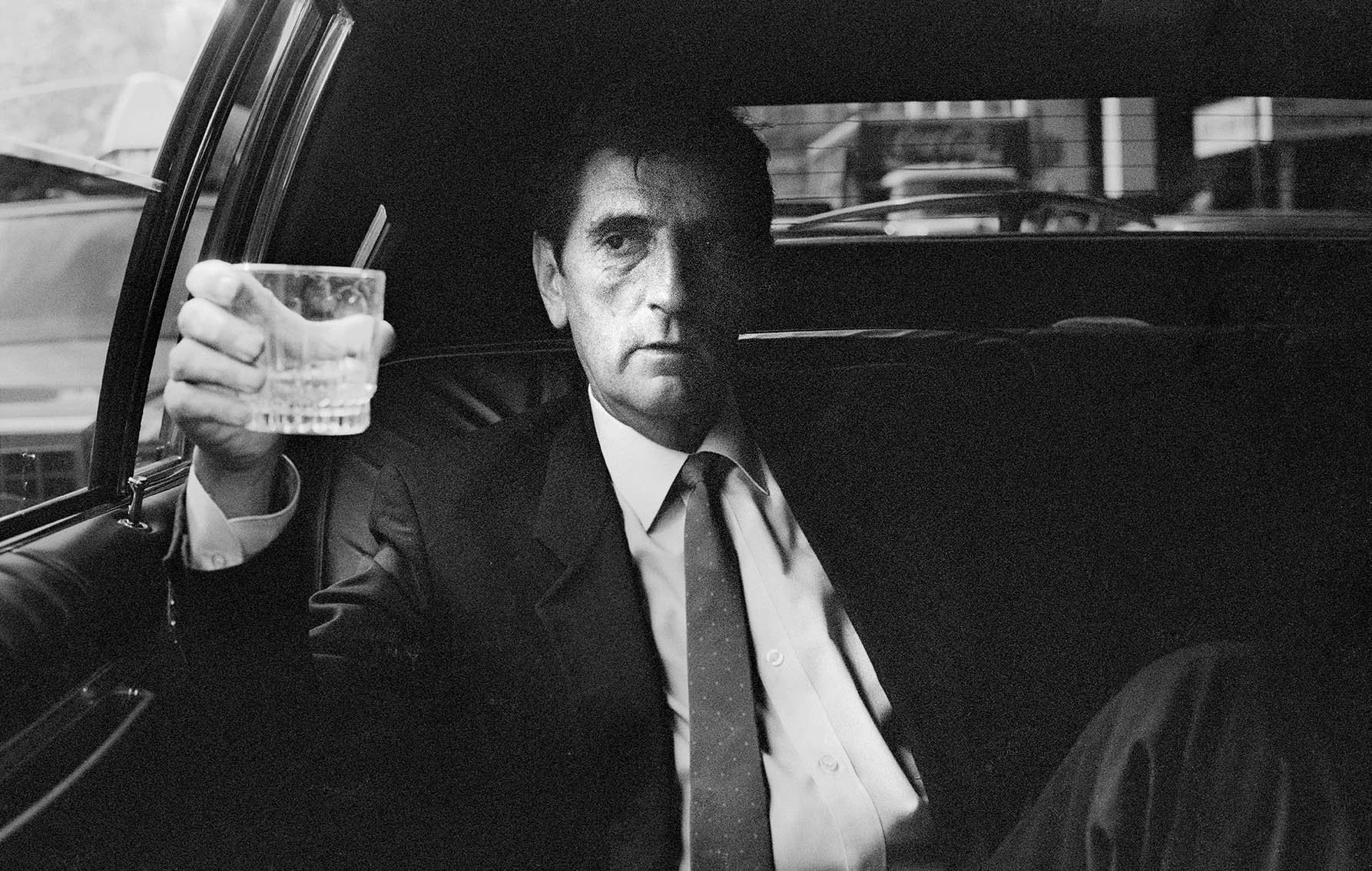By Amos Poe, March 10, 2025
“Photography is truth…and cinema is truth 24 times a second” — Jean-Luc Godard
“Every photo is the first frame of a movie.” – Wim Wenders
There’s a fabulously wunderbar show of German auteur Wim Wenders’ photographs at the Howard Greenberg Gallery until March 15- interesting to filmmakers, cineastes and film editors primarily, I would think, since depending on which photograph catches one’s eye first, one can then create a Wim Wenders film by walking from one to the next; a hand-held self-narration. A puerile and perfect plastic-colored narrative unfolds. It is endlessly entertaining in this way; the entire show can also be considered as an enchanting dialogue between Wenders (very much alive) and SusanSontag (not so). Looking at Wenders’ images that compromise his travels between 1977 and 1987 I could clearly hear Sontag’s dry voice in my ear.
“A way of certifying experience, taking photographs is also a way of refusing it—by limiting experience to a search for the photogenic, by converting experience into an image, a souvenir. Travel becomes a strategy for accumulating photographs. The very activity of taking pictures is soothing, and assuages general feelings of disorientation that are likely to be exacerbated by travel” - Susan Sontag, On Photography, 1977.
The great experience of Wenders movies has always been his pictorialness; he unabashedly loves pictures. The prettier the better; in this uglier and uglier world who can rightfully blame him? They invite us into his colorful world. In the 80’s there were three charming Italian painters - Cuchi, Chia and Clemente: and three uber prolific New German directors - Herzog, Fassbinder and Wenders. Whereas Fassbinder was overwrought, deluded with Douglas Sirkian melodrama, politics (both personal and public), coke-fueled sex and Herzog’s genius for operatic mysticism took him to ever stranger paradises, Wenders seemed most at home in the cozy confines of the cinema or the mythic open spaces of the American West. He is a tourist in his own soul, easily travelled, from Paris Texas to Japan, and from Berlin to Pina Bausch. Which leads us back to one of Sontag’s most profound, accessible ideas: “Essentially the camera makes everyone a tourist in other people’s reality, and eventually in one’s own.”
It seemed that the lethal cocktail of madness, badness and genius killed Fassbinder, and was kinder to Herzog; Wenders’ great asset was that he was ‘everyman’--the hipster Henry Fonda--and he lived to tell the tale without the inevitable scars. The reckless beauty of these images is such that we have seen them before, perhaps even taken them on our own road trips, they’re recognizable: motels, sunsets, broken down drive-ins, the road trip sonata; our greatest hits. With a Wenders central-casting-cast to light the firmaments: John Lurie, Jim Jarmusch, Dennis Hopper, Nick Ray, Harry Dean and Martin Scorsese changing a tire, or maybe not changing a tire. The texts written by Wenders accompanying each photo are, on the surface, an understandable telling of the tale, but often extraneous, unnecessary, indulgent, superfluous, de-mystifying, redundant: “The next picture on that contact sheet was this one of John Lurie, great actor and sax player, and obviously, quite a kisser, too.”
I was left with the feeling that besides his curious cinetic skills, Wenders is imbued with the obsessions of a collector. He is, again, everyman, one of us, a collector of images, intent on collecting the world. On finding out stuff; on searching. The other feeling I had was of missing the eye and soul combo of Robert Frank, another European with a camera, who had a different sense of America when he travelled across it - what I would venture, a black and white sensibility and a photographer’s soul; a different experience, the difference between the photogenic and the cinegenic - what Wenders looks like without the ‘motion’ of motion pictures. Because that very motion is the lie. The lie of cinema; the lie embedded in America, the American ‘brand’ - Hollywood, the American dream, the Wild West, the story behind the story, the burial grounds under every valley, atop every mountain, the children of Marx and Coca-Cola, the images Wenders saw, captured.
Amos Poe is a screenwriter and director. His many films include The Blank Generation, Unmade Beds and Alphabet City. He was the director of TV Party with Glenn O’Brien and Chris Stein.
WIM WENDERS “Lounge Painting II Gila Bend” 1983. © Wim Wenders and Howard Greenberg Gallery
WIM WENDERS “The Theatre, Texas” 1987. © Wim Wenders and Howard Greenberg Gallery
WIM WENDERS “When Martin Scorsese had a Flat Tire II” 1977. © Wim Wenders and Howard Greenberg Gallery
WIM WENDERS “Harry Dean Stanton, New York” 1984. © Wim Wenders and Howard Greenberg Gallery





